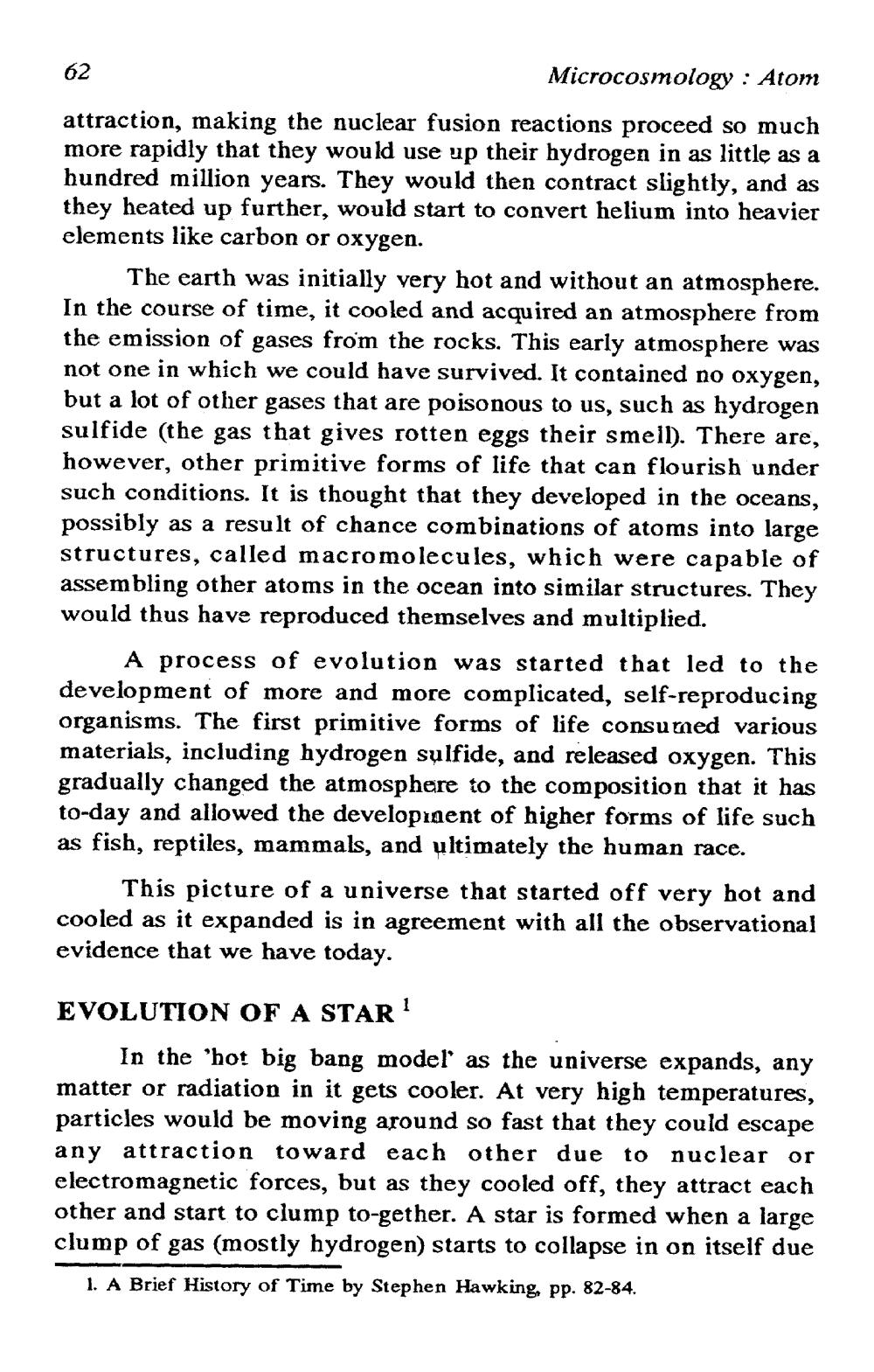________________
Microcosmology: Atom
attraction, making the nuclear fusion reactions proceed so much more rapidly that they would use up their hydrogen in as little as a hundred million years. They would then contract slightly, and as they heated up further, would start to convert helium into heavier elements like carbon or oxygen.
62
The earth was initially very hot and without an atmosphere. In the course of time, it cooled and acquired an atmosphere from the emission of gases from the rocks. This early atmosphere was not one in which we could have survived. It contained no oxygen, but a lot of other gases that are poisonous to us, such as hydrogen sulfide (the gas that gives rotten eggs their smell). There are, however, other primitive forms of life that can flourish under such conditions. It is thought that they developed in the oceans, possibly as a result of chance combinations of atoms into large structures, called macromolecules, which were capable of assembling other atoms in the ocean into similar structures. They would thus have reproduced themselves and multiplied.
A process of evolution was started that led to the development of more and more complicated, self-reproducing organisms. The first primitive forms of life consumed various materials, including hydrogen sulfide, and released oxygen. This gradually changed the atmosphere to the composition that it has to-day and allowed the developinent of higher forms of life such as fish, reptiles, mammals, and ultimately the human race.
This picture of a universe that started off very hot and cooled as it expanded is in agreement with all the observational evidence that we have today.
EVOLUTION OF A STAR 1
In the 'hot big bang model' as the universe expands, any matter or radiation in it gets cooler. At very high temperatures, particles would be moving around so fast that they could escape any attraction toward each other due to nuclear or electromagnetic forces, but as they cooled off, they attract each other and start to clump to-gether. A star is formed when a large clump of gas (mostly hydrogen) starts to collapse in on itself due
1. A Brief History of Time by Stephen Hawking, pp. 82-84.




